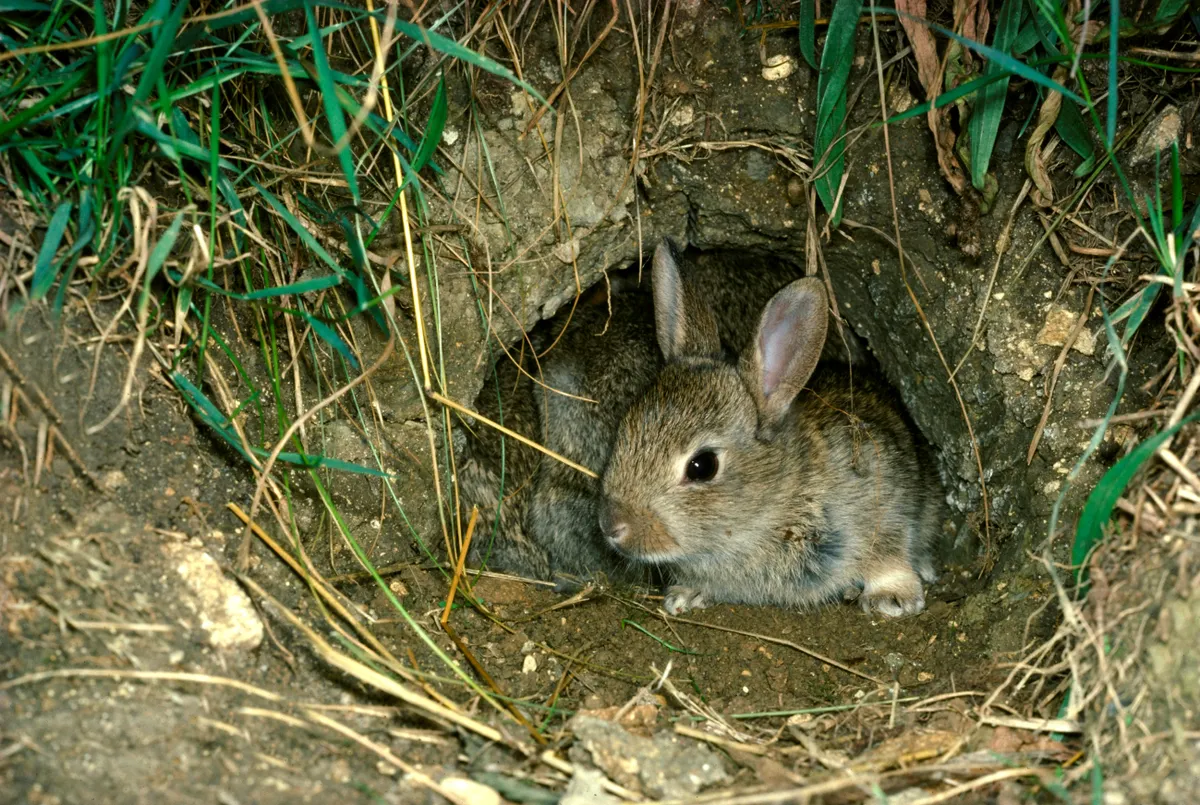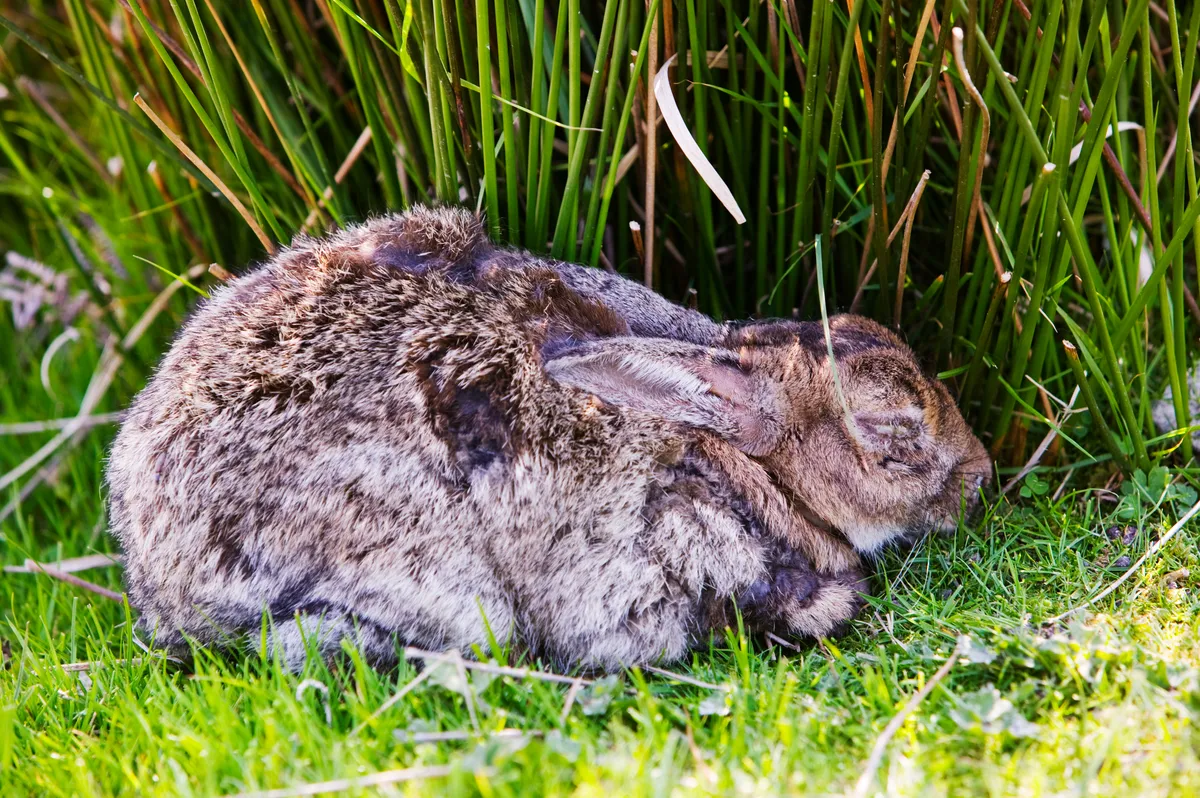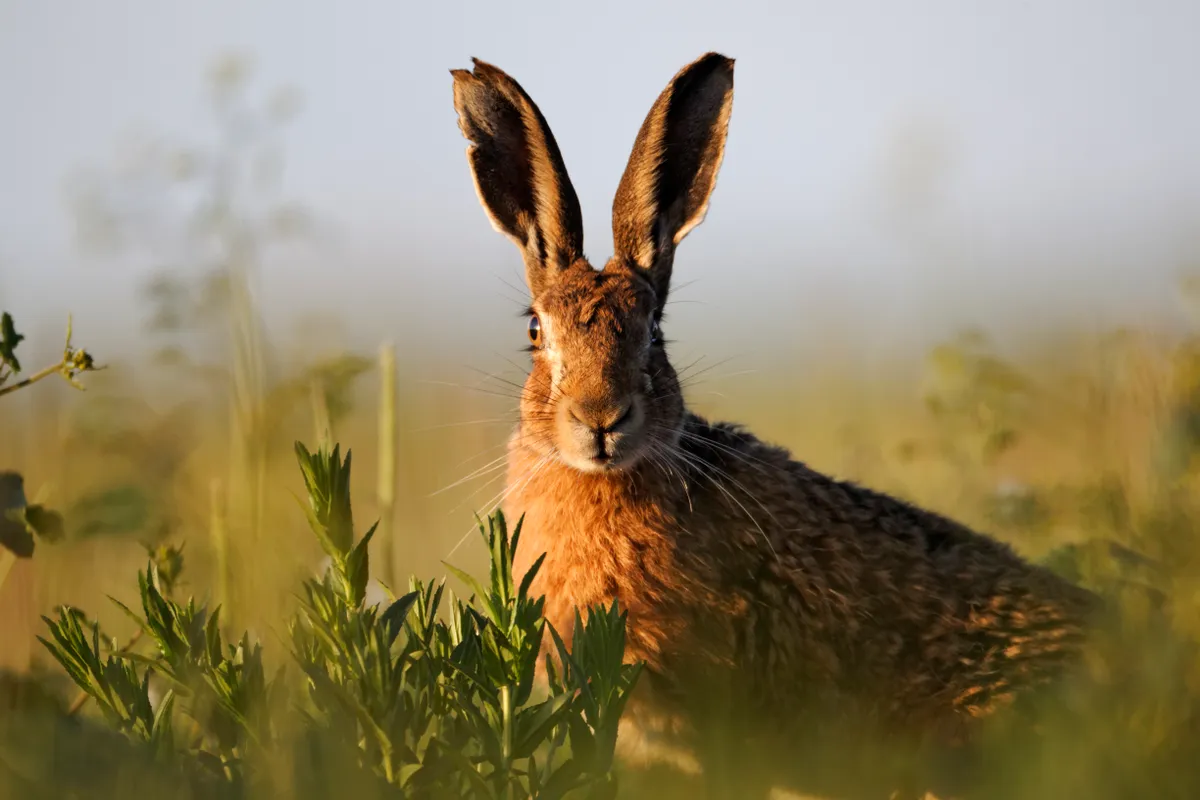Rabbits (Oryctolagus cuniculus) are one of the UK's most easily identified and most loved small mammals. While a common sight in the countryside, it is always a delight to spot a rabbit hopping through the grass. Commonly associated with Easter, the rabbit remains an endearing image in British popular culture.
Learn more about the rabbit in our expert species guide, including where they live, the rabbit breeding season and other key facts.
Still hopping for more content? We also have a guide to hares and explain how to tell the difference between rabbits and hares in our expert Q & A.
Where do rabbits live?
Rabbits are widespread across the UK, and their natural habitat is in meadows, grasslands and woodlands. They live in family groups, in large networks of burrows underground called warrens. While you may see them in fields while out walking, they are unlikely to linger if you approach. Rabbits are very alert to danger and will thump hind legs on the group to warn others of approaching threat. When in danger, a rabbit will bolt for its nearest hole.

When is the rabbit breeding season?
The rabbit breeding season lasts between January and July. During a single season, a female may have four or five litters each containing an average of five youngsters.
What is a male and female rabbit called?
Male rabbits are known as bucks, the females are does.

What is a baby rabbit called?
Baby rabbits are called kittens or kits, and are born with closed eyes, no fur and unable to regulate their own body temperature. The later in the spring a rabbit is born, the less likely it is to be killed by a hard frost. Few rabbits live beyond their second year. The vast majority (75 per cent) perish in their first three months of life.

Are rabbits native to the UK?
Rabbits are not native animals, but they have been here for more than 1,000 years. It’s thought they arrived not long after the Norman Conquest in 1066. They were initially spread throughout Europe from the Iberian Peninsular by the Romans, although they appear not to have reached Britain until 700 years after the Romans left.
Rabbits were domesticated for meat in the early middle ages and were kept in extensive walled enclosures called warrens. At one Christmas feast in the mid 1200s held by Henry III, 500 hares and 200 rabbits were eaten.
What is myxomatosis?
If you have seen rabbits with puffy, swollen eyes when driving or walking in the countryside, there's a chance it was infected with myxomatosis.
Myxomatosis is a severe disease that's prevalent among wild rabbits. It most noticeably affects the eyes, nose and genitals: causing swelling, redness, discharge, lethargy, problems breathing and a loss of appetite. The acute form can kill a rabbit within 10 days of the first symptoms.
Myxomatosis first reached the UK in the 1950s and nearly wiped out the wild rabbit population. It has been used in some countries as a form of rabbit population control, but not in the UK. It is spread through blood-sucking insects, such as ticks, mosquitos, fleas and mites. Domestic rabbit owners are strongly advised to get their pets vaccinated to help protect it against the disease, which is nearly always fatal.
The disease only affects rabbits and cannot be passed to humans or other animals.

Where did the Easter Bunny come from?
The idea of the Easter bunny comes from ancient pagan religions of northern Europe. The goddess Eostre (or Eastre) presided over spring festivals and the hare was believed to be her favourite animal. Hares and rabbits also symbolised the fruitfulness and fecundity of spring and, with the appearance of many birds’ eggs at the same time, the ideas of Easter bunnies, eggs and new life have become intertwined. Where chocolate comes in is another story…
In medieval and early modern times, the rabbit was a symbol for lust and portrayed as a companion of goddess of love in works of art such as Cosimo’s painting of Venus. It's still seen in literature, film and TV with the likes of Peter Rabbit, Watership Down and, for very young viewers, Bing.
What is the difference between rabbits and hares?
Hares are much larger than rabbits, weighing up to 4kg while a large rabbit is half that weight. Find out more in our expert Q & A on rabbits and hares.



